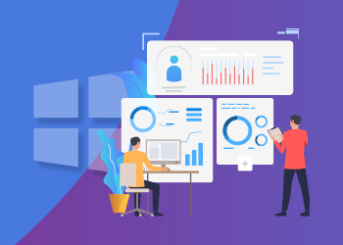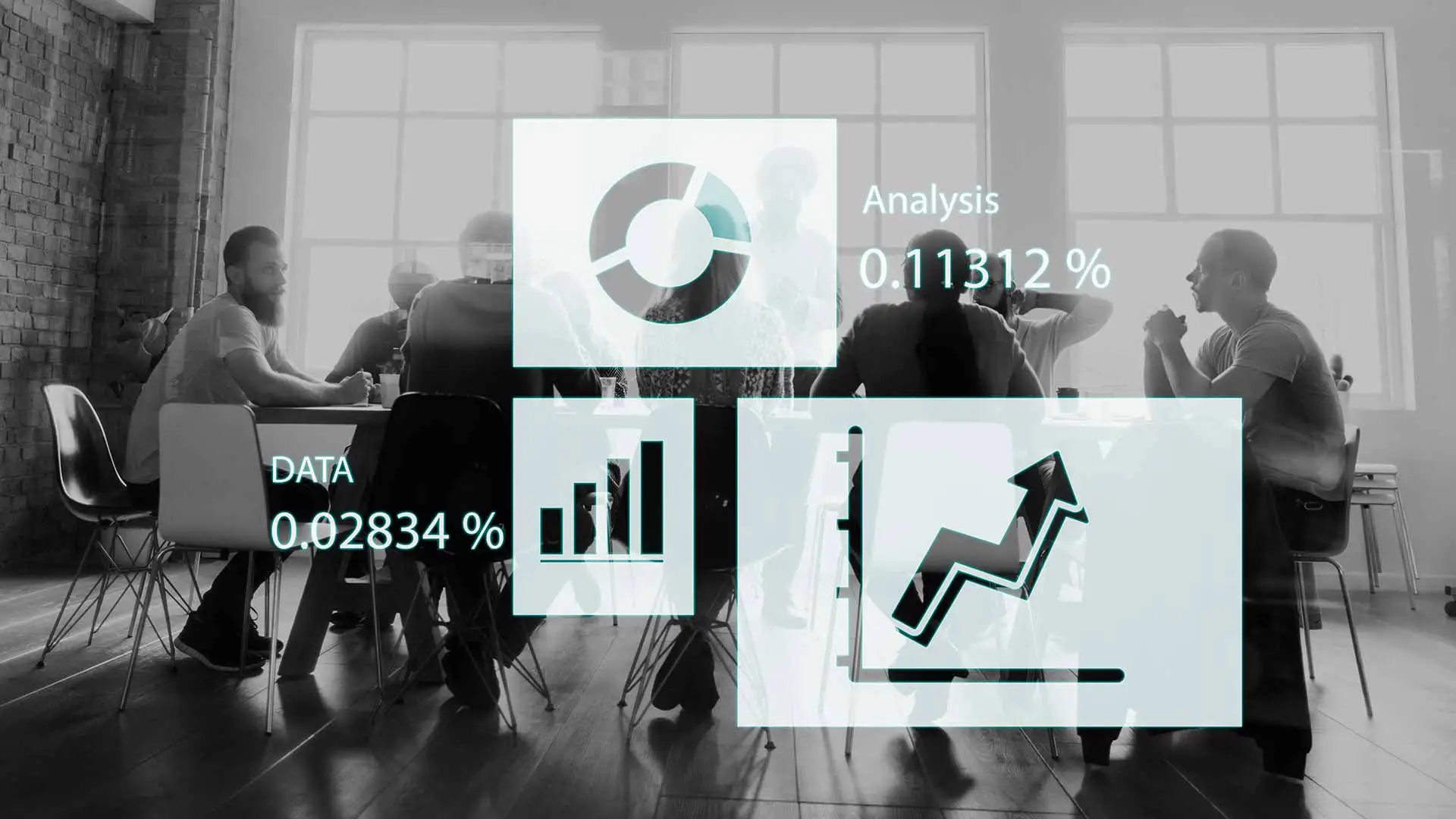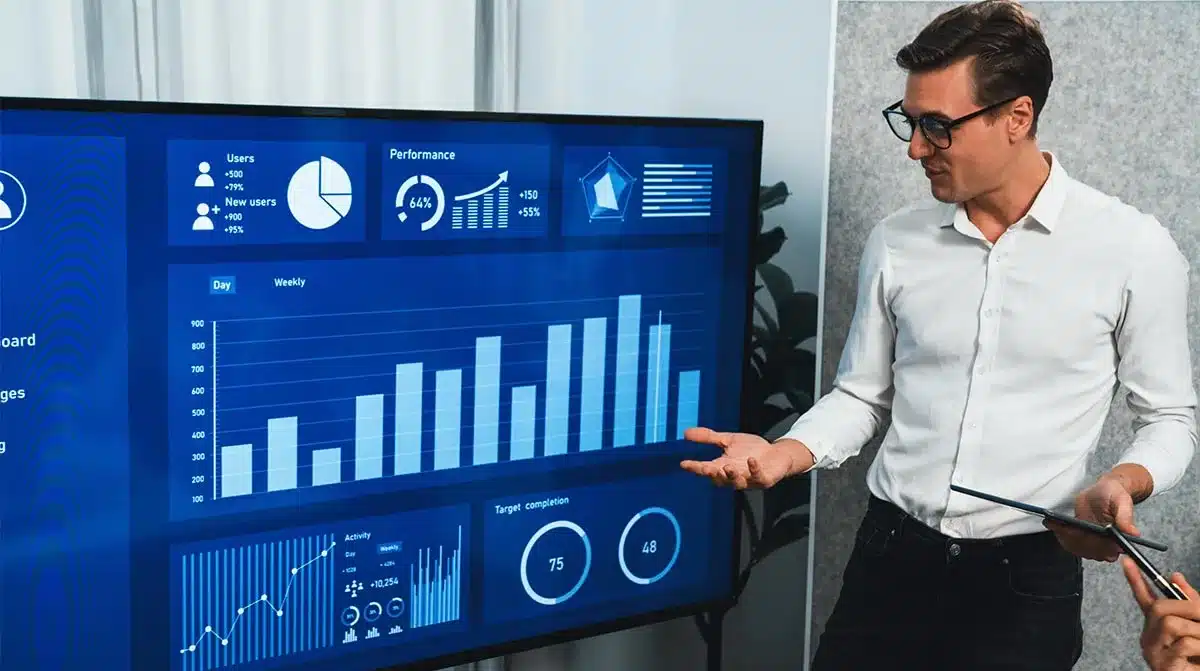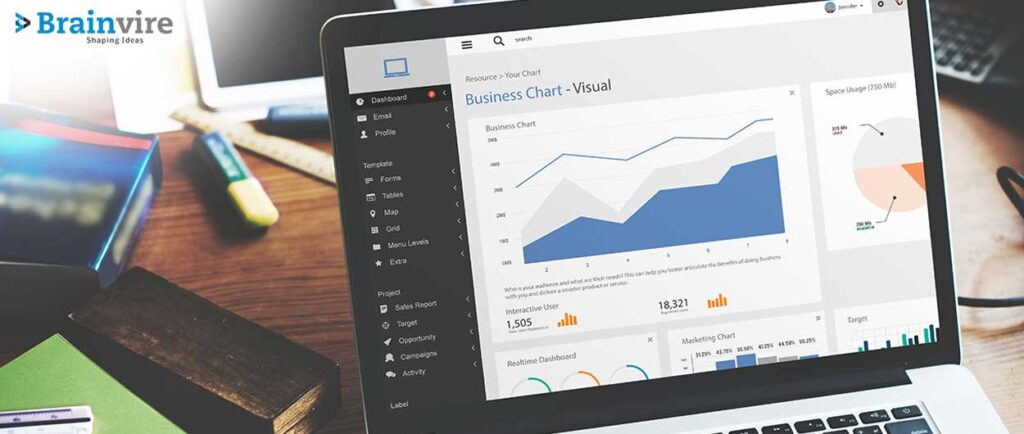
Industries like Healthcare, Media & Entertainment, Logistics, Real estate, Finance, Education, Automobile, Mobile & Wireless, Cloud Services, Retail, Advertising, and so on; needs HR staff to handle the company culture, the staff, and other activities within the organization. The human resource department focuses on operational performance and predictive analytics. Furthermore, the role is shifting to decisive HR. Transactional HR is being committed to Chatbots and automation.
Introduction
The term “human resource” was coined by management guru Peter F. Drucker (1954) in The Practice of Management. Today, Human Resources is equal to organizational strategic planners.
The existence of LinkedIn, Facebook, and Twitter communities within the company aids in the establishment of employee engagement. It investigates the internal relations that occur among workers of an organization on numerous social platforms. This study will then be used to determine how they can help deal with their reaction and performance.
Human resource management is a subject concerned with managing people within the workplace. It differs from personnel management because it focuses on effectiveness issues in carrying out organizational goals, not merely efficiency. “It places a positive emphasis on human resource utilization in the interest of creating a productive work environment.”
Let’s talk about the functions of HR
Human Resource Management in every organization is a function intended to improve employee performance by associating with the company’s objectives. HR is mainly concerned with how employees are treated within organizations, with an emphasis on the system.
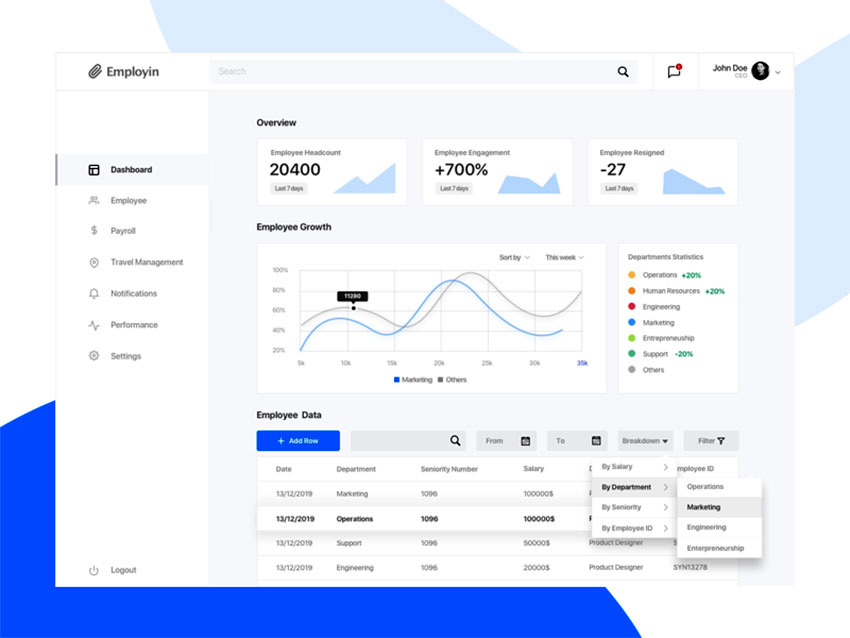
Sub-functions of HR:
Human Resource Planning
It focuses on estimating the resources needed to produce optimal business outcomes. Human resource strategies may be short-term or long-term.
Recruiting
It is essential to recruit workers with the best combination of talents and competencies at the perfect time, which covers programs such as promotions, internal work postings, and employee referrals to fill jobs.
Orientation
An employee who has committed to working with a company will return to work on the date of joining. A specific sequence of tasks is performed for the first day of an employee’s employment with the company. Employee Onboarding refers to these operations.
Probation to Confirmation
Once an employee is recruited, he usually goes through what is known as a probationary period, which will last anywhere from one to six months. During this time, the organization and the employee evaluate each other to determine whether or not to continue working together. In addition, the employee will usually go through a confirmation process after the Probation period.
Employee Information Management
Maintaining correct knowledge about employees is one of the most critical tasks performed by the HR department. Name, gender, date of birth, joining date, contact information, telephone numbers, email addresses are some of the essential sets of data that must be kept up to date. Also, they ask for previous employment history, information about the current company’s department, place, reporting manager’s email, and track of Visa, nominations, company assets, Etc. Therefore, one of the essential duties of the HR Department is to ensure that employees’ accurate and up-to-date information is kept since many operational choices are made by managers and management depending on the data.
Leave Policy
One of the HR Department’sDepartment’s responsibilities is to manage or administer the organization’s leave policy.
Tracking Attendance records
Daily tracking of the amount of time worked by an employee when he comes in and when he exits is now drawing much attention of organizations and consequently of the HR department. Apart from using this information for payroll processing, organizations would also need to generate several statutory reports based on the attendance data.
Salary Revision and Increment Process
In coordination with the management Team, HR Departments are responsible for determining or revising employee salaries. A pay revision letter is usually sent for a salary revision. This data is then sent to the payroll team, which will incorporate it into the following payroll.
Salary Disbursement and Payroll Processing
Payroll management is a crucial task for both the organization and the employee. Apart from statutory compliance, it is closely related to one of the primary reasons a person works with an organization.
Employee Engagement
The HR department is evolving from a task to a more central role. One of the secrets to an organization’s performance is having employees whose needs and interests coincide with those of the organization. The HR department plays a critical role in achieving this cohesion.
Training and Development
This aims to enhance employees’ skills and knowledge. The new hire is trained on the products and processes of the organization. Employees are also specialized in soft skills such as leadership training and leadership qualities, as well as interpersonal skills such as time management, behavior, Etc.
Performance Appraisal
Performance appraisal is a comprehensive task that assists an organization in measuring the extent to which employees are achieving outcomes that are consistent with business goals. HR professionals develop, incorporate, and retain the Performance Management System (PMS). This task is concerned with the processes of establishing success objectives for teams or entities, as well as the creation of performance evaluation approaches.
What is HR Portal?
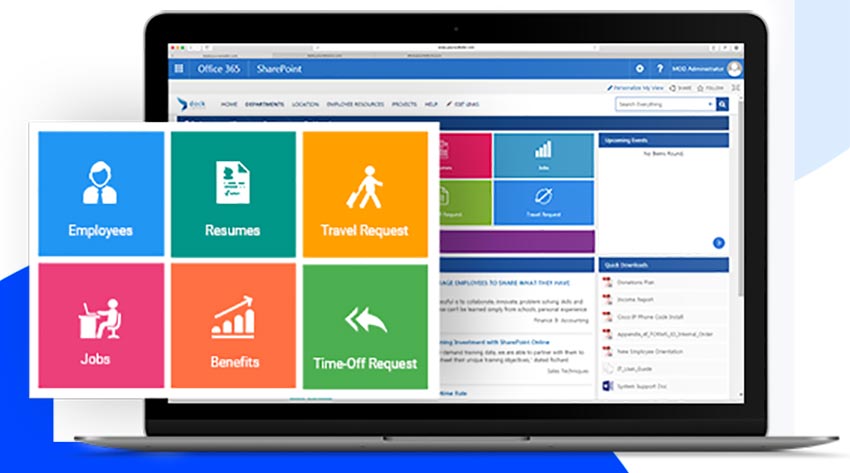
HR Portal is the Human Resources Management System (HRMS). With the use of information technology, the HR Portal allows the administration of many HR features. An HR portal seeks to boost business productivity and reliability through the automation of hand-operated and routine tasks. This saves more time for the HR staff, which can then be used to handle more competitive business activities.
HR portal is a web-based comprehensive source of information and data about HR activities and employee management. Through the Human Resource Management System (HRMS), you can find forms, standards, guidelines, and other necessary documents to support major roles in human resources. You can also track and manage employment and training processes and get access to company policies and procedures.
An effective Human Resources (HR) department ensures that all employees are treated fairly and is an asset for any business organization. The core employee management process includes the employee recruitment process, onboarding process, evaluation & performance appraisal cycle, Etc.
Onboarding new employees needs proper documentation, including job descriptions, relevant policies manuals, etc. Evaluation of the existing workforce needs regular feedback, which is supported by standardized reporting metrics for both performance and training.
All this process involves a number of data collection and documentation that requires coordination between various departments within the organization as well as outside resources such as recruitment agencies, license checking authorities, Etc. These actions add to the complexity of HR management which is addressed by using an automated web-based Human Resources portal.
The Need for an HR Portal
The fact is, the HR roles are increasingly relying on Data Analytics and automation. With Artificial Intelligence (AI) being the buzzword, everything is driven by delivering the best insights at the perfect time. This isn’t restricted to large companies; entrepreneurs and growing businesses experience numerous obstacles that can only be mitigated by getting proper systems in place.
- Data Management
- Employee Self Service
- Guaranteed Statutory Compliance
- Today, an increasing number of businesses are turning to AI-based SaaS HR software to forecast the results of executive goals such as KRAs, Etc. Employee training on emerging technology using AI to grasp new technologies and demonstrate the benefits to workers is leading to an increased application of digital technology.
Human Resources Portal features & functions
- Reduction in Paperwork
- Improved Engagement
- Reduced Cost
HR portals offer a number of benefits over traditional paper filing system which includes:
Paperwork reduction – all documents are stored electronically, reducing manual efforts to maintain records. Easy access to documents through search engines helps reduce the time required for finding a particular document. The standardized portal structure ensures information authenticity and consistency across organizations.
Improved employee engagement – many organizations offer online access to the HR portal as a benefit for their employees. This helps employees track work-related information, get access to company policies and guidelines, appraisals & salary details, Etc. Any communication initiated by an employer will reach employees instantly over the portal, saving time required in communication through phone or email.
Reduced cost – HR portals reduce costs by helping facilities automation of routine tasks with minimum human efforts. All data is stored electronically, eliminating manual entry errors and reducing rework due to lost documents. Improved efficiency also reduces indirect costs such as those associated with recruitment agencies, additional paperwork required with government compliance requirements, Etc.
Human Resources Portal offers a number of benefits over traditional paper filing systems.
An effective human resources portal should include the following key functions:
- Provide a single point of access to multiple HR functions
- Offers a self-service model with the ability to enter and pull information across organizations & outside resources
- Features that enable better reporting & analytics over existing workforce behavior and activities
- Ability to access information from any location as well as on the go through mobile devices such as smartphones or tablets. In addition, the portal should be integrated with social media tools for employee interactions.
Data Analytics in the HR portal
Data Analytics today is a key factor for a successful business. We all know that in the world of big data and analytics, businesses and organizations are slowly shifting their focus to incorporate data-driven decisions not only in business intelligence and reporting but also in the day-to-day activities of a business. As a result, there is an increased demand for data professionals.
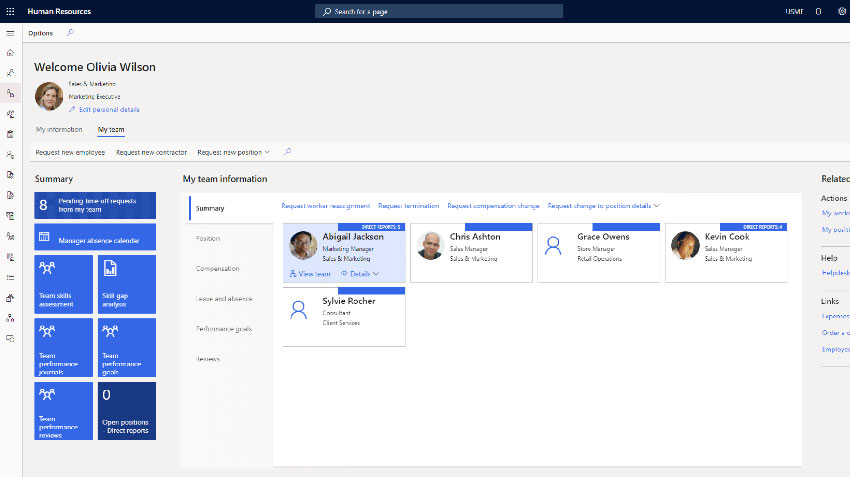
The shift from traditional reporting to advanced analytics also means that organizations must now focus on the development of tools that can provide drag-and-drop functionality for creating analytical models, dashboards, and reports.
Tools like Power BI, Tableau, and Qlikview provide the needed functionality to analyze data intuitively by combining business intelligence with Data Analytics. Smaller organizations are also trying to gain more insights into their workforce with limited budgets. They are looking for ways to combine advanced analytics into the existing infrastructure that is currently available.
This is where data analytics in an HR portal becomes important. With the help of advanced analytics, companies can gain advanced insights into various aspects of the company. This allows managers to make well-informed decisions related to business operations, strategic decisions, product development, and marketing campaigns.
Traditional reporting is done by using reports and dashboards that show the aggregated information supplied from operational systems. On the other hand, Data Analytics provides a certain level of interactivity to the reports and dashboards. This helps managers make quick, smart decisions which they can use to drive business growth.
Employee Analytics: The primary objective of an HR department is to recruit the right people and provide them with training and development so they can achieve their defined career goals. Therefore, it is important to measure the performance of employees and help them improve their skills. This is where data analytics comes into play. It provides managers with information that helps them analyze workforce-related information.
Analysis of HR portal data can be used to discover insights about the business and make changes accordingly. Data analytics enables companies to identify key areas that can be covered with data integration and visualization.
Analysis of HR portal data covers the following key areas:
- Employee engagement, attrition, and turnover
- Workforce management
- Employee development, performance, and recognition
- Succession planning and leadership pipeline
- Diversity and inclusion
- Compliance and risk management
- Recruitment
- Benefits, compensation, and rewards
- Learning and development
- Employee experience
- Analytics across HR functions
- Automation of human resources processes with AI
How to implement Data Analytics into HR Portals?
Not that long ago, it was not easy to implement data analytics into HR portals. Organizations had either employed numerous people to deal with the data, had to rely on a complicated system, had a small data analysis capability, or had none at all. Data collection from existing HR portals was usually limited to just a few standard reports that were simple but not actionable.
Today, Microsoft’sMicrosoft’s Power BI has become the best way to implement data analytics into HR portals. Employers can not only access all kinds of reports about their organization, but they can also use Power BI to analyze data quickly.
Employers are always looking for ways to get the most out of their workforce, and organizations that can give them that information will have a competitive advantage.
Microsoft Power BI gives the insight you need about your Human resources and provides authentic and real-time insights into your data, enabling you to get a deeper understanding of your HR KPIs. It is easy to create dashboards to track employee turnover, efficiency, and training effectiveness. HR practitioners with no IT experience can easily follow and use these dashboards.
Microsoft Power BI HR dashboard examples:
- Dashboards for voluntary turnover
- Dashboard for training efficiency
- Dashboard for recruitment
- Dashboard for employee management
Conclusion
This is how human resources portals influence employee performance. Brainvire is a Microsoft gold partner if you want to introduce an advanced, analytically-driven HR portal personalized to your company culture and needs. Contact us now to learn how our Power BI approach will help reduce the everyday tasks of your HR department.
Related Articles
-
Microsoft PowerApps: How Enterprises Are Racing Towards Digital Transformation in Top Gear!
Microsoft PowerApps. Your enterprise might have already started using it. If not, this blog will give you all the reasons to do so right away. Speaking about this article, your
-
Power BI Visuals: Browse Interactive And Appealing Chart Data Visualizations
Business intelligence (BI) solutions provide evidence based on accumulated data to enable better decision-making. Access to information has been democratized recently and is no longer restricted to upper-level management. As
-
Mastering Data Visualization with Power BI
In the age of data, insight is the ultimate competitive edge. Whether you’re steering business strategy or streamlining operations, the ability to transform complex datasets into clear, actionable visuals can

